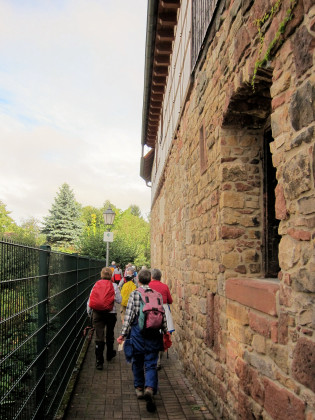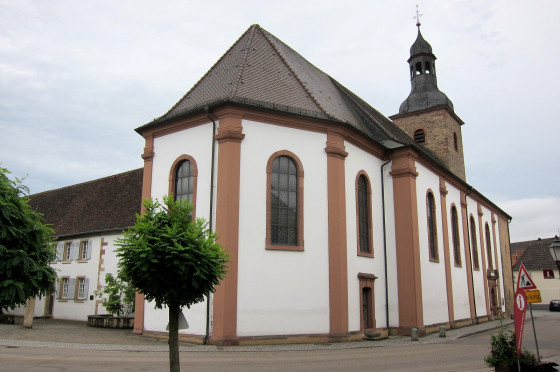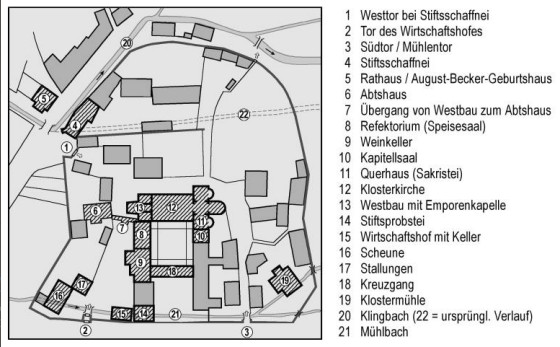
We arrive in Klingenmünster and walk along the former monastery wall.
The Romanesque monastery was already surrounded by a wall. It was extended in the 13th century, had a battlement and three gate towers.

The monastery was probably built in 626, during the reign of the Merovingian king Dagobert I (622-639). In the turmoil of the Thirty Years' War, all records and holdings were
destroyed.
The monastery flourished during the Salian and Staufer periods, i.e. from 850 to the 13th century.
Elector Friedrich III introduced the teachings of John Calvin in the Electoral Palatinate. Between 1565 and 1567, all the monasteries were abolished and the facilities destroyed.

This is what the church looks like today.

Interesting Portal

The monastery courtyard with sparse remains of the cloister.

The chapter house is hidden behind this Romanesque row of windows.

A look inside the church

This model of the monastery is in the church.

The plan of the former monastery complex

This gravestone is in the vestibule of the church. It dates from the 15th century. I have not found out who was buried under it.

